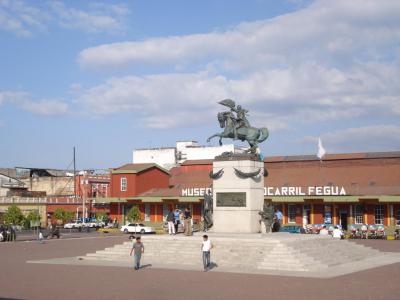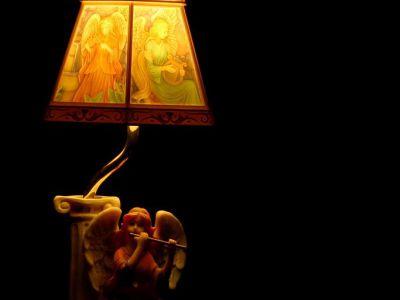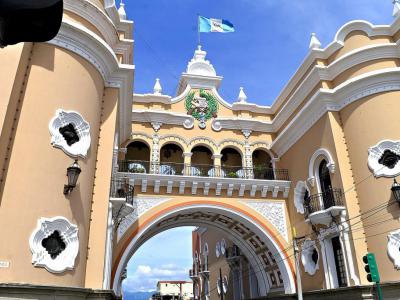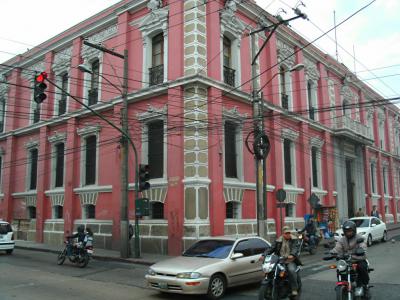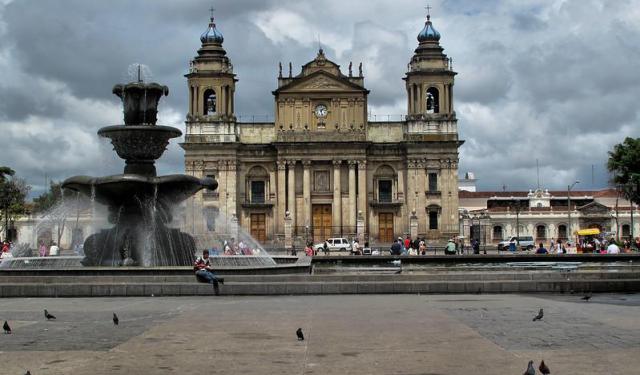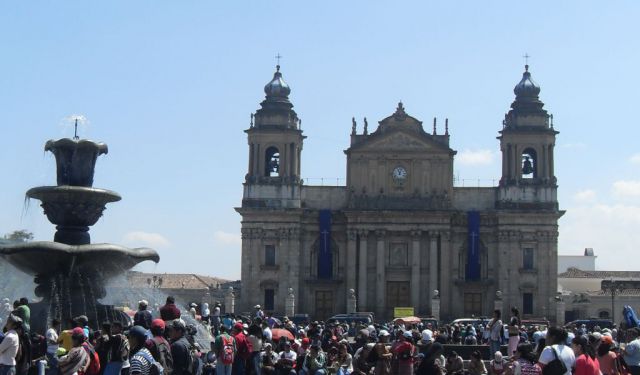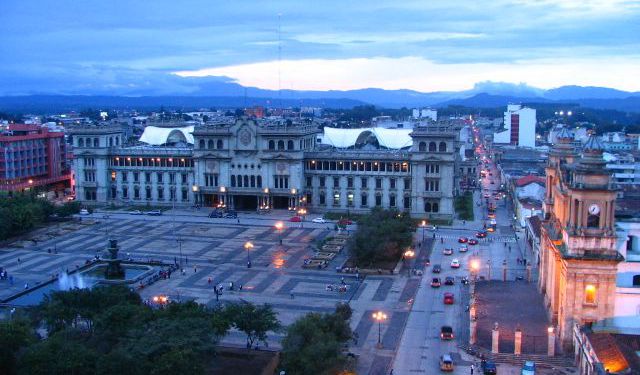
Guatemala City Culture Venues (Self Guided), Guatemala City
Among other things that a tourist may find interesting in Guatemala City are a number of cultural venues, such as museums, that provide an opportunity to discover some important and sometimes curious historical artifacts about the capital of Guatemala.
One such venue is the Guatemala City Railway Museum, located within the former railway station, offering thrilling exhibitions and a wealth of information on Guatemala's railway history.
Another notable spot is Plaza Justo Rufino Barrios, a public square named after a prominent 19th-century Guatemalan president, renowned for his liberal reforms and vision of a united Central America.
For those interested in art and history, Casa Mima, a house museum in the historic downtown, showcases a meticulously preserved late 1800s residence complete with its original furnishings, decorations, and captivating collections of Chinese and Rococo artwork.
The Guatemala Post Office Building offers a glimpse into Guatemala's past and modern postal service. While serving as the active headquarters of the regional postal service, it houses the Museum of Posts, Telegraphs, and Philately of Guatemala, featuring exhibits ranging from vintage postal accessories to a diverse collection of stamps.
Lastly, the National History Museum, housed in a French Neo-Renaissance-style building dating back to 1896, is a significant national landmark that has survived numerous earthquakes and preservation efforts.
For those keen on history, art, or simply soaking in the local atmosphere, these venues are well worth a visit. So, take the time to take this self-guided walk and get a deeper appreciation for Guatemala's profound heritage.
One such venue is the Guatemala City Railway Museum, located within the former railway station, offering thrilling exhibitions and a wealth of information on Guatemala's railway history.
Another notable spot is Plaza Justo Rufino Barrios, a public square named after a prominent 19th-century Guatemalan president, renowned for his liberal reforms and vision of a united Central America.
For those interested in art and history, Casa Mima, a house museum in the historic downtown, showcases a meticulously preserved late 1800s residence complete with its original furnishings, decorations, and captivating collections of Chinese and Rococo artwork.
The Guatemala Post Office Building offers a glimpse into Guatemala's past and modern postal service. While serving as the active headquarters of the regional postal service, it houses the Museum of Posts, Telegraphs, and Philately of Guatemala, featuring exhibits ranging from vintage postal accessories to a diverse collection of stamps.
Lastly, the National History Museum, housed in a French Neo-Renaissance-style building dating back to 1896, is a significant national landmark that has survived numerous earthquakes and preservation efforts.
For those keen on history, art, or simply soaking in the local atmosphere, these venues are well worth a visit. So, take the time to take this self-guided walk and get a deeper appreciation for Guatemala's profound heritage.
How it works: Download the app "GPSmyCity: Walks in 1K+ Cities" from Apple App Store or Google Play Store to your mobile phone or tablet. The app turns your mobile device into a personal tour guide and its built-in GPS navigation functions guide you from one tour stop to next. The app works offline, so no data plan is needed when traveling abroad.
Guatemala City Culture Venues Map
Guide Name: Guatemala City Culture Venues
Guide Location: Guatemala » Guatemala City (See other walking tours in Guatemala City)
Guide Type: Self-guided Walking Tour (Sightseeing)
# of Attractions: 5
Tour Duration: 1 Hour(s)
Travel Distance: 1.7 Km or 1.1 Miles
Author: sabrina
Sight(s) Featured in This Guide:
Guide Location: Guatemala » Guatemala City (See other walking tours in Guatemala City)
Guide Type: Self-guided Walking Tour (Sightseeing)
# of Attractions: 5
Tour Duration: 1 Hour(s)
Travel Distance: 1.7 Km or 1.1 Miles
Author: sabrina
Sight(s) Featured in This Guide:
- Guatemala City Railway Museum
- Plaza Justo Rufino Barrios
- Casa Mima Museum
- Guatemala Post Office Building
- National History Museum
1) Guatemala City Railway Museum
Situated inside the former railway station, Guatemala City Railway Museum is an exciting museum with numerous thrilling exhibitions. The museum provides a lot of information about Guatemala railway history and about each exhibit it displays. Here visitors can see displays of locomotives, diesel and passenger trains, derailments drawings and many other interesting exhibitions. The museum is open Tuesday through Friday from 9am to 4:30pm, Saturdays and Sundays from 10am to 4:30pm.
2) Plaza Justo Rufino Barrios
Justo Rufino Barrios is a six-meter monument erected in 1897 by Francisco Durini in honour of Guatemala president Justo Rufino Barrios, who was famous for his liberal reforms and his ideas about a unified Central America. At first the statue was placed opposite the Palacio de la Reforma, but was destroyed during the earthquake in 1918 and moved to Plaza Barrios.
3) Casa Mima Museum
Casa Mima is a house-museum, situated in the historic Guatemala City center. The museum was opened in 1999 and is still a very popular cultural spot for locals and international visitors. This late 1800s building is set up like a functioning house with original furniture, decorations, toys, personal belongings, kitchenware, clothing items and many other interesting objects. Fascinating collections of Chinese and Rococo artwork are also beautifully displayed here. The museum is open Monday through Saturday from 10 am to 5 pm.
4) Guatemala Post Office Building
The Guatemala Post Office Building is the general management office for the Guatemalan postal service. Known as the Palacio de Correos in Spanish, it is located in Zone 1 of Guatemala City and is currently home to the Museum of Posts, Telegraphs, and Philately of Guatemala.
Construction on the building began in 1937 and was completed in 1940. It was designed in the Neo-Colonial architectural style, with two buildings linked by an arched pedestrian bridge. That bridge was inspired by the Santa Catalina Arch in Antigua, Guatemala.
Visitors to the museum will see a Postal room with accessories dating to 1932. Items include phones, postcards, and unique stamps, along with a post office motorcycle and bicycle used for distributing mail.
The Telegraphic Room allows visitors to attempt making their telegraphs, while the Philatelic Room is a must for stamp collectors. This room offers an assortment of unique stamps and shows items used over the history of stamp collecting.
The building was declared a National Monument in 1981.
Construction on the building began in 1937 and was completed in 1940. It was designed in the Neo-Colonial architectural style, with two buildings linked by an arched pedestrian bridge. That bridge was inspired by the Santa Catalina Arch in Antigua, Guatemala.
Visitors to the museum will see a Postal room with accessories dating to 1932. Items include phones, postcards, and unique stamps, along with a post office motorcycle and bicycle used for distributing mail.
The Telegraphic Room allows visitors to attempt making their telegraphs, while the Philatelic Room is a must for stamp collectors. This room offers an assortment of unique stamps and shows items used over the history of stamp collecting.
The building was declared a National Monument in 1981.
5) National History Museum
The National History Museum is a French Neo-Renaissance-style building. It is home to a museum with exhibits that focus on the history of Guatemala. It specifically provides insight into the ethnic groups of the region.
The museum was founded in 1976. It was originally located in the National Library, then moved to the National Palace, and was temporarily held in the house of Doctor Robles on Sixth Avenue. It found its current home, in the former building of the Real Property Registry, in 1984.
The building, constructed in 1896, was carefully secured against damage to preserve valuable documents. The walls were reinforced with iron, the ceilings were made with metal mesh, and the staircases were built from marble. A minimal amount of wood was used in the building to protect it against fires.
It was one of the few buildings, that was not destroyed during the earthquake of 1917. However, it was severely damaged. The earthquake of 1976 damaged about 50 percent of the building, which caused the Real Property Registry to vacate. It was decided to demolish the building and turn the land into a parking lot. However, champions of historic buildings led the fight to have it declared, an important national landmark.
The building was restored in 1984 to be used as the National History Museum. It also provides concerts and film screenings; and hosts a library.
The museum was founded in 1976. It was originally located in the National Library, then moved to the National Palace, and was temporarily held in the house of Doctor Robles on Sixth Avenue. It found its current home, in the former building of the Real Property Registry, in 1984.
The building, constructed in 1896, was carefully secured against damage to preserve valuable documents. The walls were reinforced with iron, the ceilings were made with metal mesh, and the staircases were built from marble. A minimal amount of wood was used in the building to protect it against fires.
It was one of the few buildings, that was not destroyed during the earthquake of 1917. However, it was severely damaged. The earthquake of 1976 damaged about 50 percent of the building, which caused the Real Property Registry to vacate. It was decided to demolish the building and turn the land into a parking lot. However, champions of historic buildings led the fight to have it declared, an important national landmark.
The building was restored in 1984 to be used as the National History Museum. It also provides concerts and film screenings; and hosts a library.
Walking Tours in Guatemala City, Guatemala
Create Your Own Walk in Guatemala City
Creating your own self-guided walk in Guatemala City is easy and fun. Choose the city attractions that you want to see and a walk route map will be created just for you. You can even set your hotel as the start point of the walk.
Guatemala City Introduction Walking Tour
Guatemala City is the capital city of Guatemala and the largest city in Central America. The history of the city dates to 1500 BC when the land was part of the Mayan civilization. The city was known as Kaminaljuyu, which collapsed for unknown causes around 300 AD.
Guatemala City as it stands today was established in 1776 following the Spanish conquest as the capital of the Kingdom of Guatemala.... view more
Tour Duration: 2 Hour(s)
Travel Distance: 3.0 Km or 1.9 Miles
Guatemala City as it stands today was established in 1776 following the Spanish conquest as the capital of the Kingdom of Guatemala.... view more
Tour Duration: 2 Hour(s)
Travel Distance: 3.0 Km or 1.9 Miles
Religious Buildings Walk
Guatemala City's religious scene, while also embracing other faiths, is centered predominantly around Catholicism. The local churches are quite impressive in terms of architecture and are an integral part of the local culture and everyday life. Nestled amid the city's bustling streets and modern architecture, the multiple sacred sites reflect the deep spiritual roots of the Guatemalan... view more
Tour Duration: 1 Hour(s)
Travel Distance: 2.4 Km or 1.5 Miles
Tour Duration: 1 Hour(s)
Travel Distance: 2.4 Km or 1.5 Miles
The Most Popular Cities
/ view all

